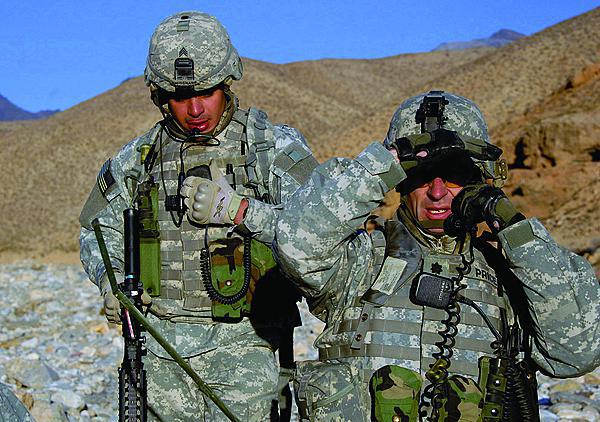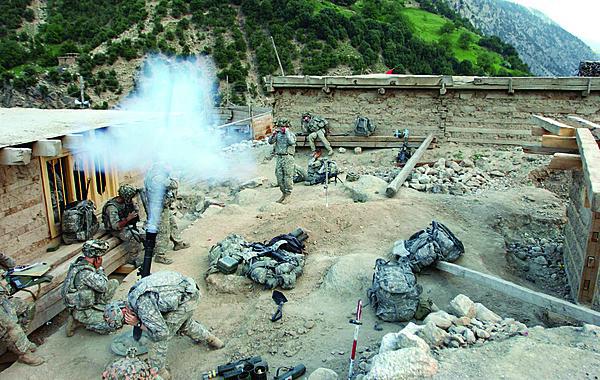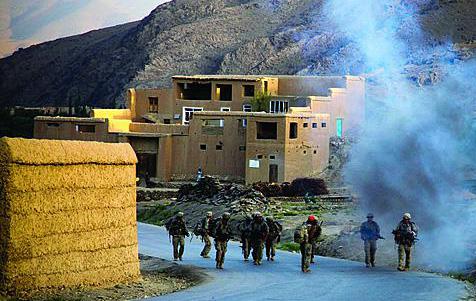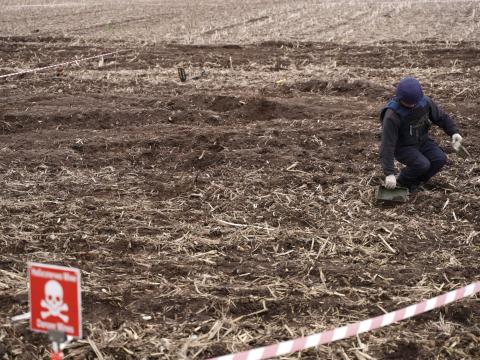Making Tactical Communications History
Two brigades from the Army’s 10th Mountain Division are preparing to deploy to Afghanistan with a host of technologies that will allow the units to provide their own network down to the tactical edge. The new equipment provides battalion and company commanders with a communications on the move capability and pushes critical data down to the individual squad level.
The division’s 3rd and 4th Brigade Combat Teams will assist in the Army’s drawdown in Afghanistan by conducting security forces advise and assist team (SFAAT) missions. They will advise and assist Afghan national security forces, including the army, national police, border patrol and civil order police. The mission will require U.S. forces to turn over fixed network infrastructure and become increasingly mobile while remaining connected to the network and situational awareness data.
In February, the Army completed fielding a range of new technologies known collectively as Capability Set 13 (CS 13) to the two brigades. “The fielding is historic if you look at it in terms of providing integrated mission command capability to SFAAT brigades because it has never been done before,” says Maj. Matthew McGraw, USA, who serves as a liaison between the 3rd Brigade Combat Team and the System of Systems Integration Directorate within the Office of the Assistant Secretary of the Army for Acquisition, Logistics and Technology. He emphasizes the word integrated.
For operational security reasons Army officials cannot reveal when the two units will go to Afghanistan, but they confirm the brigades have been training extensively with the new equipment in preparation for the upcoming deployment. “[CS 13] gives us an unprecedented capability to reach out and talk to people over long distances, so you don’t really have to worry about people getting outside of your communications range,” says Paul Wilson, director of synchronized fielding, System of Systems Integration Directorate. “What we’re putting in here is the equivalent of the Internet for the brigade. We are basically carrying our own infrastructure as part of the unit.”
CS 13 is a key part of the Army’s overall brigade combat team modernization plan, which includes new vehicles, network components and associated equipment and software. It provides integrated voice and data throughout the brigade combat team. It also will offer on-the-move and beyond-line-of-sight communications. “The brigades have all these assets at their disposal that they never had before,” Maj. McGraw says.
The capability set components include the Warfighter Information Network–Tactical (WIN-T) Increment 2, which is sometimes informally referred to as WIN-T2; the Harris AN/PRC-117G radio; the Joint Tactical Radio System Rifleman Radio; and next-generation Blue Force Tracking software. The brigades also have received Nett Warrior, which is essentially a hardened cell phone that provides integrated situational awareness and mission command capabilities down to the squad leader level. Army officials call the development and fielding CS 13 an evolutionary process with revolutionary results.
CS 13 addresses more than 55 operational need statements, giving commanders and soldiers dramatically increased abilities to communicate and share information. Enhancements include mission command on the move, allowing leaders access to network capabilities normally only found in a tactical operations center while mounted in combat vehicles. That frees those commanders from having to travel long distances to fixed locations to receive their battle update briefings face-to-face, which normally happens twice a day. “It allows that brigade and battalion commander to make an informed decision with all of the systems that he has,” Maj. McGraw explains. For instance, the major adds, commanders should be able to pull in situational awareness data from multiple sources, “in synchronization and harmony so that it provides the common operational picture that a commander needs.”
Although the new capabilities for commanders are essential, CS 13 benefits the individual soldier as well. “We issued out over 1,400 Rifleman Radios down to the unit,” Maj. McGraw reports. “Those Rifleman Radios are, for the large part, intended for the soldiers dismounted on the ground.” That radio provides push-to-talk voice communications, and it is the conduit for the Nett Warrior device to receive its digital information, the major says. “Every soldier will either physically touch or be affected by CS 13 equipment,” he states.
The capability set took shape over the course of the first three Network Integration Evaluation (NIE) exercises from June 2011 to June 2012. The semi-annual NIEs not only allowed for soldier-driven evaluations and assessments of network technologies, but they also aided the Army in the development of tactics, techniques and procedures for the CS 13 capability. “This is getting after what all of the NIEs have been doing—which is trying to get the network down to the tactical edge, to the soldier as a sensor, soldier as a shooter,” Maj. McGraw says.
Fielding an entire mobile network architecture to Afghanistan is especially important as the Army begins to withdraw forces and the existing infrastructure disappears, Wilson says. “As we get ready to do the drawdown, and we have fewer network nodes to be able to talk to, we want to be able to keep track and keep in direct communications with all of our people on the ground, so we can look after them. This is especially important, and [CS 13] gives us that capability,” he asserts.
Communications officers serving in Iraq have voiced concerns with the way the drawdown was handled in that country. They say that some units were left without access to the network, depriving them of critical information during hazardous missions as infrastructure was being dismantled.
Maj. McGraw agrees that the new technologies will serve soldiers well during the drawdown. “This is definitely the right technology at the right time for the soldiers, especially with the operation that they have currently and will have in the upcoming year,” he says.
Two brigades within the 101st Airborne Division will receive the capability set next, and Army officials say they are learning lessons from the 10th Mountain Division process that will allow them to save time during future fieldings. For example, the service can field radios and WIN-T2 at the same time it fields the new, up-armored Mine Resistant Ambush Protected vehicles. “It roughly takes two to three weeks, and we’ll find efficiencies where we can even streamline that a little quicker,” Maj. McGraw asserts.
Wilson points out, however, that delivering the equipment is only part of the overall process. “When we talk about fielding, that’s the culminating point of the whole effort that started as early as October, where we started to stage equipment and began new equipment training,” Wilson says. “It takes a considerable amount of time to train soldiers how to use this equipment so that when finally the fielding is complete and we hand off the equipment and they own it, they’re very proficient in understanding and operating all the pieces. They’re very comfortable with how to use it.”
While the technology is important, Army officials also emphasize the new business model. “Previously, a unit would go into theater, and [the personnel] would pick up a bunch of different types of systems that had been left over in theater, and they’d try to figure out how it was used,” Maj. McGraw recalls. “Now we have this capability set. They go over to theater and take this network, this technology with them to theater after they’ve had months and months of training on it.”
Maj. McGraw is assigned to the System of Systems Engineering and Integration Directorate but has been staying with the 10th Mountain Division since June 2012. As liaison to the 3rd Brigade, he is known as the trail boss. “All along the way, a trail boss like Maj. McGraw is the center of the universe, making things happen for all of the parties concerned. He’s the leader of the band,” Wilson explains. “At each location, we have an officer—a major or lieutenant colonel—who is responsible for making everything happen so that at the end of the day, the unit receiving the gear is fully trained and fully comfortable that they can execute their mission in combat using this equipment,” Wilson adds.







Comments